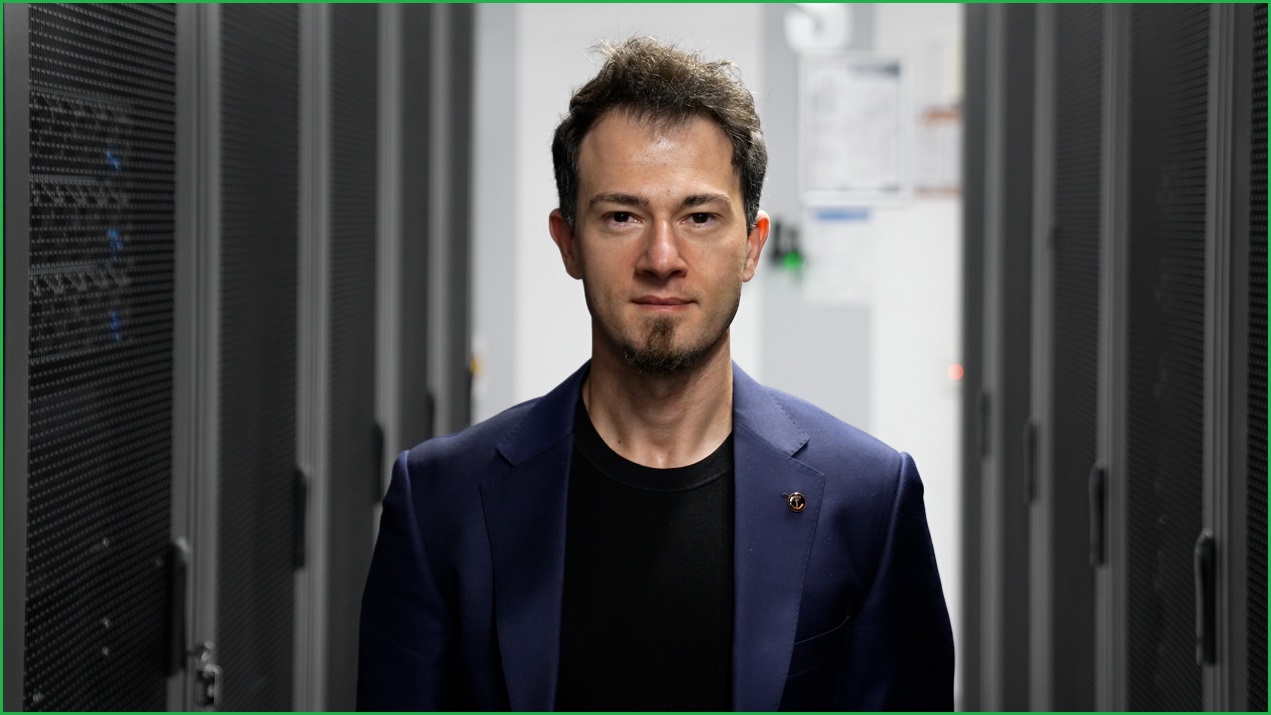University of Melbourne researchers have been awarded the ‘Nobel prize of high-performance computing (HPC)’ after using the world’s second-fastest supercomputer to build a “quantum-accurate” simulator that can design new drugs more accurately than ever.
The team — led by University of Melbourne associate professor Giuseppe Barca with support from Australian National University researchers Jorge L Galvez Vallejo and Elise Palethorpe, as well as AMD, QDX Technologies, and Oak Ridge National Laboratory (ORNL) — took the idea to new heights, earning the ACM Gordon Bell Prize and its $US10,000 cash prize.
Using ORNL’s Frontier ‘exascale’ supercomputer — which taps 9,472 AMD CPUs and 37,888 Instinct graphics processing units (GPUs) to process 1.102 quintillion calculations per second — the team set new records for a technique called ab initio molecular dynamics (AIMD).
“The accurate simulation of complex biochemical phenomena has historically been hampered by the computational requirements of high-fidelity molecular-modeling techniques,” the team’s paper says, noting that earlier AIMD approaches struggled at scale.
By using a new computational approach, Barca’s team was able to model a system with 2 million electrons — 1,000 times larger than was previously possible — and run the process 1,000 times faster than previously possible.
That’s an effective boost in computational capacity of 1 million times, which the team said was thanks to a new technique that utilises “near-peak performance on modern GPU architectures” and “redefines the boundaries of what is computationally feasible in molecular dynamics”.
The process models molecules using a series of ‘timesteps’, and when run on another ORNL system called Perlmutter — the world’s 19th fastest supercomputer — it took just 3.4 seconds per time step to model a protein fragment with 1,496 atoms and over 5,500 electrons.
“The enhanced scalability and accuracy of our simulation techniques,” the team said, “empowers the scientific community to tackle longstanding challenges in both chemistry and biology.”
Scientists have long recognised the ability of supercomputers to speed the process of designing new drugs by modelling the interaction of molecules with human proteins ‘in silico’ – testing promising candidates much faster than in ‘in vitro’ laboratory settings.
The process requires modelling the molecular interactions between thousands of atoms, allowing researchers to identify potentially beneficial drug candidates that are molecularly stable and interact most effectively with targeted proteins and other molecules.
Because they model the interactions between individual electrons, such algorithms operate at the level of quantum mechanics.
Yet while scientists understand how to use techniques such as ab initio wave function (WF) theory to do this, they have not scaled well in the past.
Pushing the state of the art
Australian researchers have a strong history in supercomputing, with facilities such as Western Australia’s Pawsey Supercomputer facility and its new Setonix supercomputer at the cutting edge of astrophysics and quantum computing fields.
As new chips, new manufacturing techniques, and new ways of thinking lead to faster and more powerful supercomputers to support fields such as artificial intelligence and scientific discovery, the success of Barca’s team reflects the culmination of four years of research.
The project “enables us to simulate drug behaviour with an accuracy that rivals physical experiments”, Barca said when the technique was revealed in July.
Given that more than 80 per cent of disease-causing proteins cannot be treated with existing drugs, and just 2 per cent work with known drugs, Barca said the ability to rapidly and accurately model potential therapies, and to target a broader range of diseases, was crucial.
“We can now observe not just the movement of a drug,” he said, “but also its quantum mechanical properties, such as bond breaking and formation, over time in a biological system.
“This is vital for assessing drug viability and designing new treatments.”
Barca co-founded QDX in 2023, and the company has secured commercial deals with pharmaceutical companies and tech startups in Australia, Singapore and the United States.
Its prospects can only be helped by the Association for Computing Machinery’s Gordon Bell Prize, the high-performance computing industry’s highest honour, which has been awarded at each year’s SC Conference series since 1987.
Frontier is just one of three exascale computers in the world today, but as more come online, ORNL computational chemist Dmytro Bykov said scientists in a range of fields would be empowered “to tackle larger, more complex problems facing society”.
“These simulations push our computing capabilities into a brand new world of possibilities with unprecedented levels of sophistication and radically faster times to solution – and this is just the beginning of the exascale era.”










